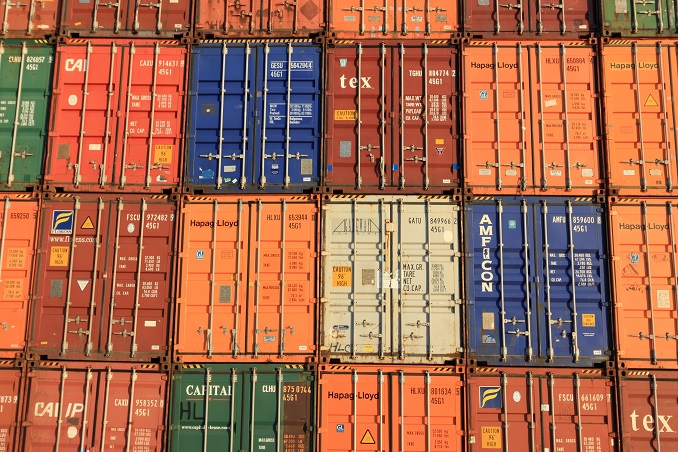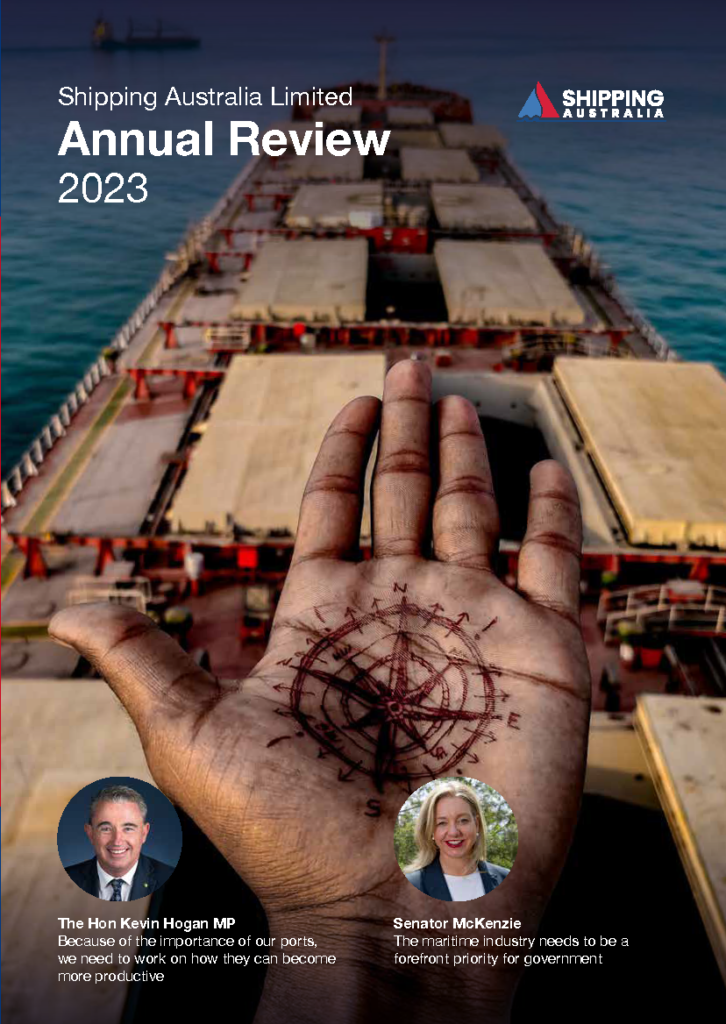
Exporters of farm produce will be – and likely are being – hit particularly badly by a policy imposed on the supply chain by the Sydney-based private container port operator.
The port operator has imposed a requirement – without consultation and without any room for discussion – that ocean shipping lines must hit a near 1:1 import / export ratio for containers. This means that shipping lines must export lots and lots and lots of empty boxes, when they otherwise wouldn’t have done so, because they are keeping a stock of containers available for customers in Australia**.
Exporters who want access to those boxes may now find it more difficult to get a 20 footer because of the ECIS policy.
Policy is causing and / or aggravating a 20 foot box suppy / demand mismatch
In a nutshell, the policy of the private port operator is causing, or is aggravating, a shortage in the supply of 20 foot containers which are desperately needed for export purposes by farmers and other exporters. The consequences of a shortage of twenty foot boxes for export are many, and they are harsh.
Harsh consequences for farmers and other exporters
An inability to hire twenty foot boxes will lead to lost farm exports and lost farm sales. It could damage farmers’ relationships with overseas customers and Australia’s reputation as reputable supplier.
Farmers, particularly, are then are faced with further problems.
An inability to access boxes means that they can run out of storage space on their farms.
It also means that they might not be able to sell their produce. If the crops cannot be sold then that is a lot of time and cash that the farmer has lost. Those crops represent time spent by the farmer along with a wide range of inputs such as fertiliser, water, transport and storage, among many other costs, that the farmer will never recover. Apart from the dead-loss of the crops, the farmer is also hurt because he or she may need the capital tied up in the lost crops, and any potential profit from the sale, to plant the next crop.
Worse, agri-exports are perishable. Grain spoils, beans spoil, wine (exported in bladders inside boxes) spoils. Obviously, any spoiled produce will have to be disposed, but spoiled agricultural crops present a health and environmental risk too. Rotting crops may give off various gases that can be harmful to human health. Rotting crops are contaminants in the eco-system. Rotting crops can attract vermin, insect pests and can be home to pathogens. Disposing of rotting crops safely costs time and money.
If the farmer is in the happier position of being in the overlapping hinterland between Melbourne and Sydney he or she may (possibly) have the choice of diverting produce to Melbourne. But even that’s not guaranteed. And the vast majority of farmers in Australia do not have any such choice.
All exporters, farmers or not, also bear the risk of their goods becoming uneconomic if they cannot access twenty foot containers. Costs continue to incur regardless of whether goods are exported. Ongoing storage costs are an obvious example. If goods have to be stored, and if storage has to be paid for (which it usually does), then the profitability of shipments can be eroded away until it is no longer worthwhile to ship the product.
Even if all of these issues can be overcome, customers might still reject late shipments. Some goods are intermediate goods – they are used to make, or are consumed in the production of, other things. If our exporters cannot get the goods in time to their destinations then it is highly likely that the customers will reject them.
And we haven’t even begun to touch on such matters as insurance, trade financing and the like.
In short, farmers, and other Australian exporters being unable to get their hands on 20 foot boxes is bad for farmers, is bad for Australian exporters and is bad for Australia generally.
Hardly an incentive
The private port operator in Sydney imposed an incentive scheme on shipping lines to ‘encourage’ shipping lines to export more empty containers. Basically, the port operator charges higher fees if not enough empty containers are exported (they’re looking for a near 1:1 ratio of imported boxes to exported boxes).
Shipping lines don’t need this ‘encouragement’.
Shipping lines benefit from having containers in the right place at the right time. They like to export containers from Australia so they can get the boxes back into use carrying cargo.
Many factors are outside of the control of shipping lines
Meanwhile, the volume of container exports are outside the control of shipping lines.
Port performance is not optimal so the ports are not processing enough ships fast enough to keep up with the cargo flows. At times of high congestion in 2020 and 2021, Shipping Australia members wanted to bring empty box ships to Australia to load empty boxes but they couldn’t get a berth for weeks-and-weeks. Inevitably, poor port performance leads to a build-up of empty containers.
Some shipping lines carry a lot of “shipper-owned containers” and tank containers. These are often one-way containers. Because they are shipper-owned, they are completely beyond the control of shipping lines. Accordingly, a shipping line carrying a lot of one-way shipper-owned containers is going to be hit hard by the incentive scheme.
Stevedores have contractual arrangements (called the “pro-forma exchange”). It is agreed that, per ship visit, there will be X number of boxes taken off the ship, X number of boxes put on. For the avoidance of doubt, we’re not criticising the stevedores on this point – this is a common industry practice. We’re just pointing out that it exists and it is a cause of container build-up beyond the shipping line’s control.
All of this is done in tight timeframes as ships have to sail. If time runs out and the ship sails then boxes can be left behind.
There are numerous landside issues that affect container evacuations – truck driver availability and shortages can be a major issue. Without truck drivers moving boxes, boxes can’t be evacuated.
There have been huge strikes and industrial unrest on the Australian waterfront – again, outside of the control of shipping lines.
All of this, and more (see our explainer on empty box build-up), led to a huge build-of empty boxes in Australia even though there were – at the same time – record numbers of empty boxes being exported.
Private port operator’s policy is aggravating a supply / demand issue
The issues from a year or two ago of empty container management appear to have resolved somewhat as we’re now not hearing of such huge empty container management issues any more.
But the Sydney-based private container port operator continues to impose huge penalties if ocean shipping companies do not meet the private port operators’ near 1:1 import / export ratio.
To hit the empty container export targets, the shipping companies must export as many FEUs as they can – but it’s not enough. They must also export as many TEUs as they can.
So TEUs, particularly food-grade TEUs, are in high demand and they are in limited supply. The policy of the private port operator is making the supply / demand situation worse.
For the benefit of Australian farmers, for all Australian exporters, and for Australia generally, the Empty Container Incentive Scheme should be scrapped.
Backgrounder: Australia’s imbalanced trade
We have an imbalanced container trade that is lopsided in several different ways.
Firstly, what we import / export is unbalanced. We tend to import large amounts of valuable manufactured goods (fashion goods, electronic goods and the like). But we tend to export high volume, low value goods (scrap metals, waste papers, hay etc). We also tend to export low volume and high value agri-goods (skins, grains, beans, wine and the like).
Imported manufactured goods e.g. phones, computers, running shoes, fashion items tend to be high value and low volume (they have a high value per gram or kilogram but do not weigh a lot generally and their packaging often contains a lot of empty space). Exported agri-goods are different. Such goods have little empty space in the pack and they are heavy. Consider the weight of a small pack of uncooked rice vs the weight of a new mobile phone in its original, unopened, box.
Secondly, we tend to import manufactured goods in Forty Foot containers (FEUs) and we tend to export agri-goods Twenty Foot containers (TEUs). Because agri-goods are heavy, there’s a safety issue – individual containers that are too-heavy are a danger to trucks, truckers, other road users, dockworkers and everyone else. Meanwhile, many containers that are too-heavy can threaten the stability of a ship in rough seas and can even cause a vessel to sink.
Because agri-goods are heavy in large volumes they are exported in TEUs and they are not generally exported in FEUs*. TEUs can take about 21,700 kg of cargo and FEUs can take about 26,500kg. So even though an FEU is twice as long as a TEU, it can only lawfully take a slightly bigger amount of cargo. An FEU full of grain would be grossly over-weight and it would be against Australian law to transport it by truck or to load it on a ship.
Right now, there is particularly high demand for TEUs. All the rain we’ve been having over the last couple of years has led to massive grain harvests and grain silos around the country are full. The near-term outlook for grain harvests continues to be good. So Australian farmers need lots of empty twenty foot boxes now and we will continue to need them for the foreseeable future.
Meanwhile, as TEUs are used for agri-exports they have to be upgraded to food grade quality (a very high standard of cleanliness – see explainer below; note – a “clean” container is not a “food grade” container).
Food grade containers can therefore be in high demand but in limited availability. Food quality containers usually have to be specifically ordered in the right quantities and in advance. There’s a lot more to this issue, and you can read our article: “Explainer: why is there a shortage of food quality containers around the world?“. Food grade containers are produced from normal twenty foot containers. If there is a shortage of regular twenty foot boxes then there will be a shortage of food grade boxes.
Thirdly, we import mostly full boxes and we export mostly empty boxes; we export a lot more empty boxes than we export full boxes. We have some (but hardly any) imports of empty boxes. We have large export volumes of empty boxes (the empty vs full split in container exports is about 60% empty to 40 % full but this varies by year and port).
For these main reasons, Australia tends to end up with lots of big, empty, forty foot containers (and which are in low demand for exports) and relatively few twenty foot containers in Australia (but which can be in high demand). There’s a lot more to this topic, and you can read our article: “Explainer: why has the inventory of empty shipping containers built up in Australia?”
* * this article was amended with a correction on 23 March 2022. In the original article, we wrote that shipping lines basically had to import one empty container for every import container to meet a near 1:1 load-discharge ratio. That was factually incorrect. Shipping lines have to export close to one TEU – full or empty – for every import TEU (to meet a near 1:1 load-discharge ratio). We apologise for the error. Sorry.
* but, note, there are always exceptions


